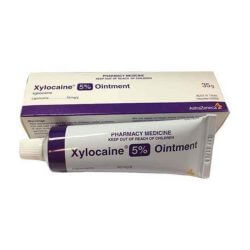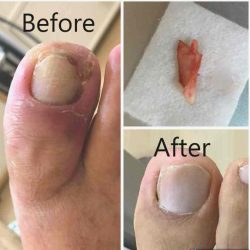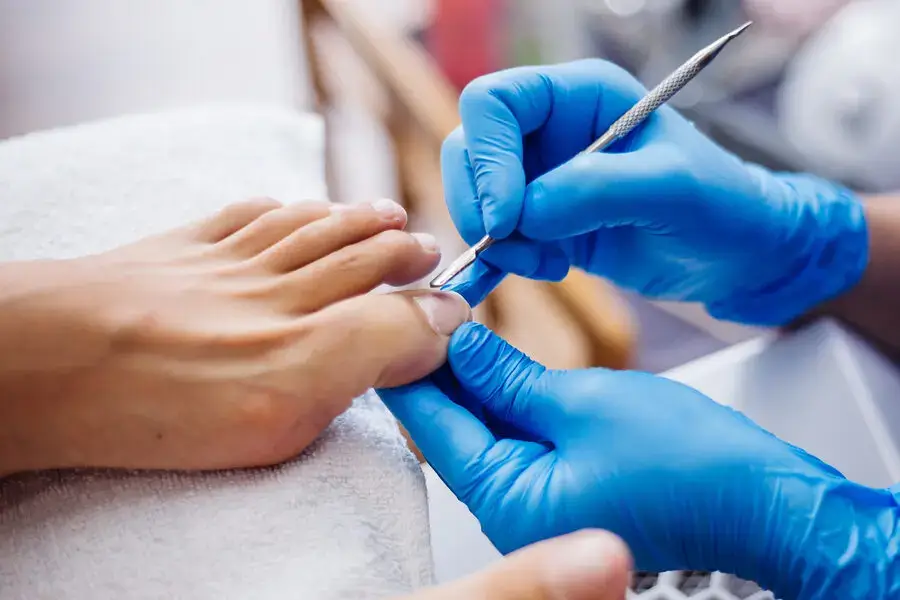Feet First Podiatry
Ingrown Toenail Removal Surgery & Treatment In Singapore
Dealing with a sore, swollen toe that just won’t get better? You might be facing an ingrown toenail—a common but often painful condition. If left untreated, it can lead to infection and ongoing discomfort. Fortunately, effective solutions are available.
From gentle treatment to precise surgery, we offer trusted ingrown toenail removal services in Singapore to help you get back on your feet comfortably.
What is Ingrown Toenail?
An ingrown toenail is a common foot condition that occurs when the edge of a toenail, typically the big toe or the second toe, curves inward and grows into the surrounding skin. This abnormal growth can lead to a range of uncomfortable symptoms, including severe pain, redness, swelling, and even infection.
What Causes Ingrown Toenails?
1) Improper nail trimming: Cutting toenails too short or rounding the corners can increase the risk.
2) Trauma to the toe: Injury to the toe can disrupt the normal growth of the nail.
3) Fungal toenail infections: This weakens the nail structure, making it more brittle and prone to cracking, which develops sharp corners and curve, increasing the likelihood of it digging into the surrounding skin and causing an ingrown toenail.

Signs & Symptoms of an Ingrown Nail?
✓ Pain: This is often the first and most noticeable symptom. The affected toe may be tender, especially when wearing shoes or applying pressure.
✓ Redness and Swelling: The skin around the ingrown nail may become red and swollen, indicating inflammation.
✓ Pus: In severe cases, a pus-filled infection may develop, leading to increased pain and swelling.
✓ Tenderness to Touch: The affected area may be sensitive to touch.
✓ Visible Ingrowth: The edge of the nail may be visibly curved and growing into the skin. Other possible symptoms:
- Fever: This may indicate your ingrown toenail is now infected.
- Warmth: The affected toe may feel warm to the touch.
- Increased pain: The pain may worsen over time, especially if left untreated.
• Difficulty walking: Severe cases may make it difficult to walk normally.
Benefits of Ingrown Toenail Removal
Choosing professional ingrown toenail removal offers numerous advantages, especially when conservative treatments haven’t provided relief. This surgical procedure not only eliminates the immediate pain and discomfort caused by the ingrown nail but also helps prevent future occurrences. Effective ingrown nail treatment in Singapore ensures a faster recovery, reduces the risk of infection, and improves overall foot health. With expert care and precise ingrown toenail, removal, patients can regain comfort and mobility, making daily activities much easier.
Ingrown Toenail Treatment in Singapore
Non-surgical home treatment for ingrown nails
1. Soaking: Soaking the affected foot daily in a lukewarm salt bath can help soften the skin, reduce inflammation, and relieve discomfort caused by an ingrown toenail.
2. Antiseptic application: Application of betadine solution can help prevent infection.
3. Proper Nail Trimming: Trimming the nail straight across and avoiding rounding the corners can help prevent future ingrown toenails.
4. Wearing Comfortable Footwear: Choosing well-fitting shoes that don’t put pressure on the toes can reduce the risk of ingrown toenails.
Advanced non-surgical treatments in Feet First Podiatry Clinic
1. Nail plate lifting/packing:Nail plate lifting/packing: This involves gently lifting the edge of the ingrown nail and placing a small piece of cotton underneath can help redirect the nail’s growth away from the skin.
2. Podiatrist’s toenail trim: This involves applying a small brace to the nail to correct its growth pattern. This is a popular and effective method of ingrown nail treatment in Singapore.
3. Anti-fungal treatment: If a fungal nail infection is contributing to the problem, targeted treatment is essential. We use advanced laser therapy to eliminate the fungus, supporting healthy nail restoration and reducing the chances of recurrence.
Ingrown Toenail Removal Surgery
Our Step-by-Step Surgical Process for Lasting Relief
When conservative methods don’t bring relief, ingrown toenail surgery may be the most effective long-term solution. At our clinic, we offer safe, minimally invasive ingrown toenail removal procedures designed to eliminate pain and prevent recurrence.

STEP 1: Numbing
A topical numbing gel is applied to reduce sensitivity and make the following injection more comfortable.

STEP 2: Anaesthesia Injection
A local anaesthetic is administered into the toe to completely numb the area in preparation for the minor surgery.

STEP 3: Surgical Removal
– The ingrown section of the toenail is carefully removed.
– A medical-grade chemical called phenol is applied to the nail root to prevent regrowth of the affected part.
– This helps lower the risk of recurrence and is a trusted method in ingrown toenail treatment in Singapore.

STEP 4: Post-Operative Care
– A sterile dressing is applied and should remain for 3 days.
– You’ll receive aftercare instructions, including how to keep the area dry during showers.

STEP 5: First Review
We perform the first review 3 days after your ingrown toenail surgery to check the initial healing and address any immediate concerns. A follow-up appointment is also scheduled for one week later to monitor progress.

FINAL Review
We perform the final review about 10 days after surgery to ensure your toe is healing properly and to address any concerns before you fully recover.

Feet First Podiatry
Why Choose Feet First Podiatry Clinic for Ingrown Toenail Removal?
Reputable podiatry clinic
Look for a clinic with experienced podiatrists who specialise in ingrown toenail surgery. With Feet First Podiatry, our podiatrist is equipped with 20 years of experience in Australia and Singapore.
Consider the podiatrist's experience
A skilled podiatrist can minimize the risk of complications and ensure a good cosmetic outcome.
Check the clinic's hygiene and sterilisation practices
A clean and sterile environment is crucial to prevent infection.
Read Google reviews and testimonials
Learn from the experiences of other patients to gauge the clinic’s reputation.
Don't hesitate to ask questions
Discuss your concerns and expectations with the podiatrist to make informed decisions.
Ingrown Toenail Removal Surgery
FAQs on Ingrown Toenail Surgery
How to tell if an ingrown toenail needs surgery?
Unless it’s a one-off incident, such as trauma to the toenail or participating in a marathon, that caused an ingrown toenail, most cases will require some level of surgical correction.
How long does a ingrown toenail surgery take?
The ingrown toenail surgery usually takes about 90 minutes. During this time, you will prepare paperwork, mentally prepare for local anesthesia, undergo the surgery, and recover in our observation room.
How long to keep bandage on after ingrown toenail removal
– 3 days until your next visit to the podiatrist.
– Usually, it takes around 10 to 14 days for our clients to fully recover and no longer require dressing care.
Can you still walk after ingrown toenail surgery?
Yes, you can still walk and function normally right after the surgery. The anesthesia usually wears off in about an hour. However, we suggest drinking plenty of water and resting for the first three days, until your next visit to the podiatrist.
How long does it take to recover from an ingrown toenail surgery?
Usually, it takes around 10 to 14 days for our clients to fully recover and no longer require dressing care.
How soon can you wear shoes after toenail removal?
You could wear open sandals after the procedure. To return to closed-toe shoes, it’s usually recommended on day 4, after the podiatrist’s review and the change to a smaller, thinner dressing.
Does insurance cover ingrown toenail removal in Singapore?
It’s recommended to check your insurance policy or consult with your insurance agent to obtain pre-approval for ingrown toenail surgery. Many major insurers in Singapore, such as Bupa, Cigna, and Allianz, often cover this procedure, especially if it’s medically necessary.
How much is ingrown toenail surgery cost in Singapore?
The cost of ingrown toenail surgery typically ranges from $800 to $1500, depending on the number of toes affected and the severity of the condition. At Feet First Podiatry, our fee is $860 per toe, and with additional follow-up visits (usually 2-3), the total cost, including GST, can be around $1,300.
Feet First Podiatry offers one of the most affordable and permanent solutions in Singapore.
Does ingrown toenail surgery hurt & how painful is ingrown toenail removal?
Most of our clients do not experience significant discomfort or pain after the surgery, even after the anesthesia wears off. However, we recommend avoiding crowded areas to minimise the risk of accidental foot injuries.
Post-ingrown toenail surgery is similar to a dental extraction. As long as you keep the wound site clean and protected from external trauma, minimal to no discomfort is expected.
Does nail grow back after ingrown removal?
At Feet First Podiatry, we offer ingrown toenail removal/surgery with a phenolisation technique. This unique procedure, performed only by trained podiatrists, offers a 97% success rate in preventing regrowth. The 3% of cases that may experience regrowth are typically due to:
1) Allergic to anesthesia, preventing surgical intervention;
2) Allergic to phenol, leading to the body’s rejection of the chemical and incomplete root destruction; or
3) Anatomical variations, where the nail root is too deep for the phenol to effectively penetrate and destroy.
Do toenails look normal after ingrown toenail removal?
Yes, however do expect a 10% to 20% reduction in width size.
What happens if you don't remove a ingrown toenail?
Unfortunately, ingrown toenails don’t simply “go away” as the condition involves a sharp nail edge embedded in the skin. It requires manual removal to alleviate pain and discomfort. The skin cannot heal properly while a sharp object remains embedded.
Should I see a podiatrist or GP for ingrown toenail?
You should see a podiatrist. Podiatrists are the only healthcare professionals trained to remove ingrown toenails using the phenolisation technique. At Feet First Podiatry, we do not recommend or promote a whole-toenail removal procedures, as they can cause excessive trauma to the nail root.
Ready to book
your appointment?
Schedule your appointment today and experience the Feet First Podiatry difference. We ensure a stress-free experience.
